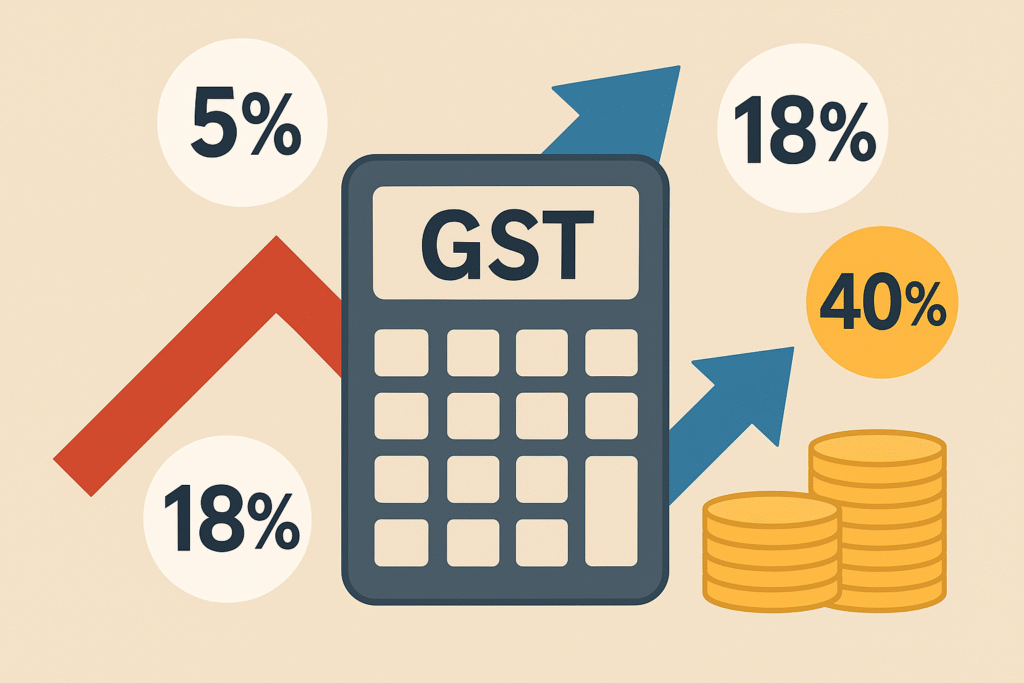India’s GST revamp in 2025 will introduce simplified 5% and 18% tax rates, with a special 40% levy on 7 luxury and sin goods. Learn what’s changing and how it impacts you.
GST revamp 2025: The Central Government is set to introduce a major revamp of the Goods and Services Tax (GST) by Diwali this year, streamlining the tax structure to just two main slabs—5% and 18%—along with a special 40% rate for select luxury and sin goods. This marks a significant shift from the current multi-tier GST system, which includes zero, 5%, 12%, 18%, and 28% rates.

Under the new framework, essential food items will continue to enjoy zero tax, while most goods currently taxed at 12% will move to the lower 5% bracket. Nearly 99% of products in the 12% category are expected to benefit from this change. Similarly, about 90% of goods and services presently taxed at 28% will shift to the 18% rate, making them more affordable and encouraging consumption.
The 40% rate will apply to just seven high-value items, including tobacco, although the total tax incidence on tobacco will remain unchanged at 88%. This targeted high-rate approach aims to balance revenue needs with economic growth, without broadly burdening consumers.
Officials believe that this simplified structure will boost consumer spending and help offset any potential short-term revenue losses. Currently, the 18% slab generates around 65% of GST collections, while the 28% slab contributes 11% and the 12% slab only 5%. The lowest 5% rate contributes around 7% to the total revenue.
Labour-intensive and export-oriented sectors like diamonds and precious stones will continue to follow their existing tax rates, ensuring stability for industries heavily reliant on global trade. By reducing tax complexities and making goods more affordable, the revamped GST is expected to stimulate market activity and enhance compliance, setting the stage for a more efficient and consumer-friendly taxation system.
